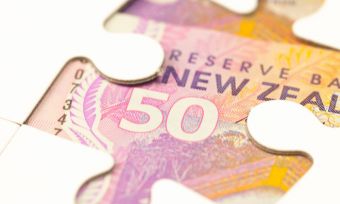CO-author: Dhayana Sena
What is the Reserve Bank and the Official Cash Rate?
RBNZ is our country’s central bank. It has been in operation since 1934 and has been 100% owned by the New Zealand Government since 1936.
The Reserve Bank (RBNZ) manages monetary policies, such as the Official Cash Rate (OCR) to stabilise inflation and the economy, maintain a sound and efficient financial system; and supply our national banknotes and coins.
The Reserve Bank does more than influence bank interest rates
Whilst the Reserve Bank does influence bank interest rates, it also has widespread functions in the country’s economy, including:
- Operating monetary policy to achieve and maintain price stability, including through setting a reserve bank cash rate.
- Assists the functioning of a sound and efficient financial system. This includes supervising the broader actions of banking institutions and the financial system as a whole.
- Issuing the national currency. Maintaining foreign currency reserves.
- Operating effective payment systems for transactions nation-wide.
- Operating in foreign and domestic financial markets.
We break down each of these 5 key functions of RBNZ in more detail, below:
Operate monetary policy to achieve low and stable inflation
The Reserve Bank cash rate, known as the Official Cash Rate, or OCR, is used to achieve its target goal of keeping Consumer price Index (CPI) inflation between 1-3% on average. The committee meets every 6 weeks (8 times a year) to decide whether or not to raise, lower, or maintain the cash rate. As at August 2019, the official cash rate has been lowered to 1%.
Check out how home loan rates are currently tracking with Canstar’s free home loan comparison tools. These rates are also updated as providers change them, including following any OCR changes.

In order to help our financial system stay sound and efficient, the Reserve Bank registers, monitors and regulates banks, non-bank deposit-takers, and insurance companies.
Supervise the financial system
In order to help our financial system stay sound and efficient, the Reserve Bank registers, monitors and regulates banks, non-bank deposit-takers, and insurance companies.
Issue the national currency
The Reserve Bank is the only organisation with the authority to issue the currency of New Zealand. They sell this currency to banks in wholesale amounts at face value.
To detect forgeries and prevent quality deterioration, all notes are inspected by Reserve Bank experts. Polymer bank notes were introduced in 1999, so now old or damaged bank notes have to be shredded in a granulator. Previously (until 1989), old paper notes were taken up to the roof of the building and thrown into an incinerator. Now, though, our currency is brighter.
Coin minting and polymer bank note printing aren’t actually done in New Zealand at the Reserve Bank – it’s something that they regularly put out a tender for. Recent coins were minted in Canada and Great Britain, and our polymer bank notes are printed by Note Printing Australia in Melbourne.
How much money do they keep in the vaults on-site? It’s a well-kept secret, but… Enough for any cash reserve emergencies.
What about the gold? Actually, there is none. The bulk of the gold reserves were sold in the 1960s, and the last little bit of bullion was sold in 1991.
Operate effective payments and settlements systems for transactions nationwide
The Reserve Bank of New Zealand operates and supervises two payments and settlements clearing systems so that our nation’s finances continue to run smoothly:
- Exchange Settlement Account System (ESAS):
New Zealand’s wholesale payment and settlement systems.
- NZClear New Zealand system:
The system registered banks use to complete transactions with each other.
Financial markets operation
In order to maintain inflation and the cash rate, the Reserve Bank operates in New Zealand’s domestic markets.
The Reserve Bank – an average day managing the cash rate

Ever wondered what the day is like for a staff member at the Reserve Bank? Here’s a more ant’s-eye perspective of the daily functions of the Reserve Bank of New Zealand.
5.30 am
- You may still be asleep, but the Foreign Reserves Management dealers are already working on the USA markets.
- The IT team is doing an early morning check to make sure online security and computer systems are ready for the day’s challenges.
- The Security teams are doing a handover and making the final “night shift” rounds.
7.00 am
- The Terrace (the Reserve Bank building) opens for business.
- The Exchange Settlement Account System (ESAS) Real-Time Gross Settlement (RTGS) helpdesk opens.
- Journalists and economic analysts set up camp in “lock up”waiting for the 9.00am announcement of the latest cash rate decision.
8.40 am
- This marks the ESAS end-of-day – the end of the previous day of trading.
9.00 am
- Any rate change decision is announced.
9.30 am
- The Domestic Market Operations section announces the OMO: Open Market Operations.
- Trading now begins in New Zealand markets.
12.00 pm
- If it’s a Tuesday, the treasury bill tender closes and the Domestic Market Operations team processes the bids. Then they wait for the Treasury’s approval before releasing the results at 1.00pm.
4.00 pm
- The Forecast Cash Influence Prelim release is distributed via international newswires. This release comes from the Domestic Market Operations team and is based on information from various government departments and agencies about their expected banking activities for the next day.
4.45 pm
- The cash cut off system closes for all transactions in NZClear with a cash component.
6.00 pm
- The building closes to the public, but inside, it is far from empty.
- The European bond market dealer is still hard at work.
- The Continuous Linked Settlement (CLS) system opens in order to settle foreign exchange transactions, and they stay at work until 8.30pm (in winter) or 12.00am midnight (in summer). This is so they can cover the 3-hour window in the world where all markets are open for the day at the same time, with southern hemisphere markets coming to a close and northern hemispheres opening for the day.
What can you do at the Reserve Bank Museum?
The Reserve Bank Museum is a free centre for public education about how money comes into being, and how the New Zealand economy works.
The MONIAC computer simulates New Zealand economy
It may not sound exciting at first, but this is no ordinary computer! The MONIAC is a pioneering, water-based economic simulator. It was invented in the late 1940s by New Zealander Bill Phillips because he wanted a new way to explain “macro-economics” to his students at the London School of Economics.
The MONIAC basically looks like a water tank, which uses different water levels to simulate the flow of money in and out of the New Zealand economy. It can make complex calculations that could not be performed by any other computer of its era – things like experimenting with ideas for monetary policy and exchange rates.
The MONIAC in the Reserve Bank Museum, Wellington, is the only operating water-based economic computer in the southern hemisphere.




Share this article